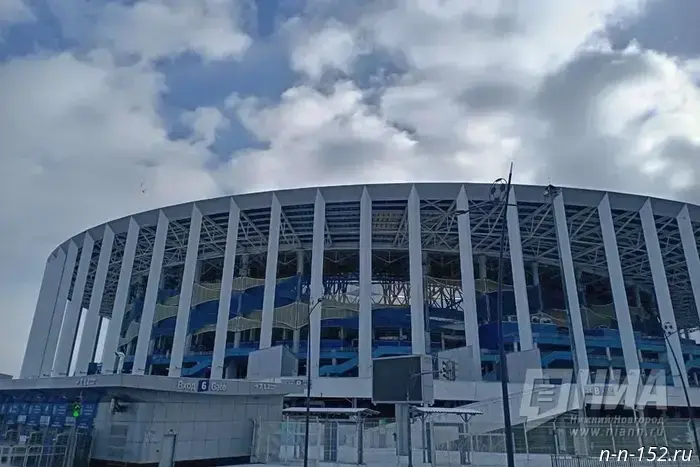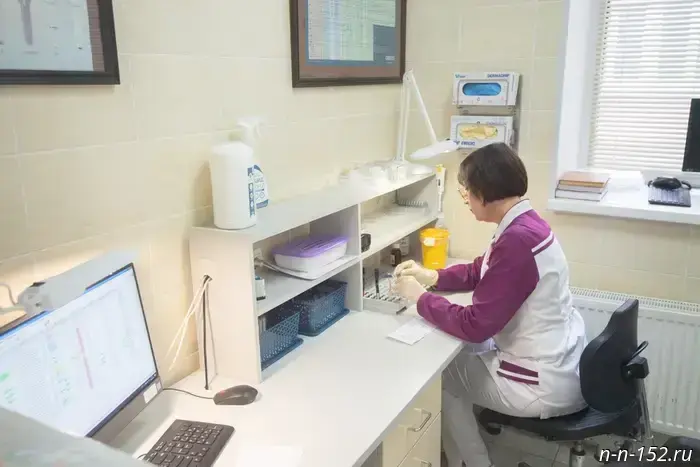Lev Zak – artist of brush and word
Many artists and writers born and living in our region have become widely known in Russia and abroad. These people are truly worthy of remembrance. After all, their creations are an essential part of the spiritual wealth of our city and the country as a whole. Through the story of one of them—a remarkable representative of literary and artistic creativity in Russia and Europe—we continue our editorial project. This is our fellow countryman, Lev Zak. His place in the historical development of 20th-century art is, as emphasized by the renowned French art critic Jean-Claude Markade, "among the best and most soulful painters of our time." This artist, poet, sculptor, and book illustrator was born in our Chyornorechye.
"Neva Prospekt" from the village of Chyornoye
In the early 1890s, the daughter of one of the founders of Moscow's Jewish community, Rozalia Moiseevna Russianskaya—wife of the Narodnaya Volya member Tseliy Zak, who was exiled for ten years to Siberia—settled in Chyornoye village. On July 12, 1892, she gave birth to a son named Lev. In 1897, Rozalia Moiseevna’s husband, the pharmacist Tseliy Zak, opened a branch of his Kanavinskaya pharmacy in Chyornoye. Since then, the family lived for a long time in Chyornoye.
The picturesque local scenery had a beneficial influence on the impressionable soul of little Lev. As his classmate—the distinguished linguist and literary scholar Roman Jakobson—testified, Zak "from childhood was rich in dreams and premonitions, in accordance with the inexhaustible dreams and premonitions of those years." At ten, Lev entered a Moscow gymnasium affiliated with the Lazarev Institute of Oriental Languages, and in 1907, he enrolled in the Faculty of History and Philology at Moscow University. To celebrate Gogol's centenary (March 20, 1909), Zak, along with his classmates, published a magazine with his fantastical illustrations for the wonderful story "Nevsky Prospekt."
Soon, he became the ideologue and inspirer of the literary group of ego-futurists, "Mezzanine of Poetry" (St. Petersburg). ( Poems by some representatives of this movement were published in the newspaper "Nizhegorodets.") In 1913, several literary almanacs titled "Mezzanine of Russian Poetry" were published: "Vernisazh," "Feast During the Plague" (both covers designed by Zak), and "The Crematorium of Sanity," featuring poems by Russian futurists, including Lev Zak's poems signed with the pseudonym Khrisanf, along with several passionate and bold articles under the name Mikhail Russiansky. These publications, as Roman Jakobson noted, "left an undeniable mark on the poetry of Mayakovsky and Pasternak."
At that time, Zak was preparing a poetic collection titled "Pyrotechnic Impressions," but it was never published. Subsequently, Zak continued to write poetry continuously. However, for unknown reasons, he did not publish them. Today, his poems are perceived as highly artistic:
Here I am loved
and here I am even happy.
The time of passion and misfortune has passed.
So, life has become
only gentler and smoother.
As if happiness
there is no in happiness at all,
As if it’s just a gift,
as if I have always been warmed by it.
And the King of the Universe
was upset with me.
He was silent with me,
coming to me...
(From his notebook, 1916)
When I, lost in wisdom,
enter the home world as an alien in a day,
and stubbornly chew over the poisons of spices swallowed,
I see: small gods sleep (and their sleep is transparent)
in white beds.
Lovely paradise!
To the communion of holy mysteries
I am brought unwashed from the road.
And I see: on proper scales,
passionate life
does not weigh down the fragile bowls,
it surpasses,
like weightless dust,
with a babyish smile, through sleep.
(Paris, 1928)
"Every word has a special scent"
For almost sixty years, Zak the poet was absent from the literary world. Only in 1970, in Munich, under the pseudonym M. Russiansky, was published his collection of selected poems "Morning Inside" (1913–1970). It made a huge impression on poetry enthusiasts. His publisher, Markov, wrote in the foreword that "what we have before us is not just good poetry, but significant and highly original poetry." For Zak, this manifested in sound associations, in a set of phonetically similar words. Similar techniques can also be found in the works of Andrey Voznesensky, Pavel Antokolsky, Vladimir Mayakovsky, and Boris Pasternak. But Lev Zak was one of the first to use this method. As early as 1913, he wrote:
Tarantella tarantula!
And I will lie
Tired vandal.
Crucify me,
Carry my heart to the tropics,
Pop the dense corks!
Crucify me.
Spray blood,
Mechanics, from the pumps!
I am a libertine, but not a philosopher.
Spray blood.
Tarantella tarantula!
And I will lie
Tired vandal.
As we see, here sounds predominate. At the same time, Zak emphasized that "every word has its own special smell. A poetic work is a combination not so much of words-sounds as words-smells." But that’s not enough. According to Zak, a poem also needs a tone. "If you ask a painter what a painting is," he explained, "he will say it’s a combination that has a common tone. The same can be said about a poem." At the same time, the tone of a poem can also be set by sounds, as in Lev Zak’s "Tarantella tarantula!" or "I will soon kill with sorrow…".
Lev Zak’s broad recognition came not as a poet, but as an artist. He began drawing in his high school years. At 15, he entered the private school of artist Fyodor Rerberg. He also studied under Ilya Mashkov. In 1907, the works of the young artist were exhibited at the Moscow Salon of Artists. Zak’s painted credo was silence. As he himself stated, a good painting should have few words.
In 1917, he married the daughter of a Jewish public figure, Nadezhda Braudo. They had a daughter, Irina, also an artist, and a son, Vasily.
A French citizen
During the Civil War, Lev Zak’s family moved to Nikolayev, and in 1920, to the West. They lived in Constantinople, Rome, and Florence, then in Berlin. Since 1923, they settled in Paris. In 1938, the artist became a French citizen. When German troops occupied Paris, Zak went into hiding in a village under a different name but continued working. In 1943, he designed decorations and costumes for productions of Alexander Glazunov’s "Stenka Razin" and Alexander Borodin’s "Prince Igor," staged by the New Ballets of Monte Carlo.
Stage design was one of the main aspects of the artist's work. In the 1920s, in Berlin, he designed ballet sets for the troupe "Russian Romantic Theatre of Romanov," and in Paris, he actively collaborated with local galleries. His decorations and costumes were successful, leading to a contract with the Berlin gallery Flechteim, which exhibited the most renowned European artists. Zak successfully worked as a ballet set designer in Paris, including with Veronika Nemchinova’s troupe at the Théâtre des Champs-Élysées. This also helped his career as a painter. He exhibited at the Autumn Salon and the Salon of the Independents, participating in group exhibitions in Amsterdam, Brussels, and Prague.
Zak did not cease creating paintings. Notable among them are "Pearls" (1908), "Lady by the Lantern" (1911), "Portrait of L.M. Kopelman" (1912), "Dog Under the Table" (1916), "Two Girls" (1931), "The Beggar" (1937), and others. Zak worked in the genre of "figurative painting." But from 1946 onward, he shifted to the opposite style—abstraction, to which he devoted the rest of his life. Black strokes distort faces, human figures become geometric shapes. Geometric abstractions on a colorful background Zak depicted until the mid-1950s, when his strict forms in painting began to soften, become more pure and lyrical. This defines Zak’s style, which is most famous in Europe.
His non-objective, paradoxical, and mysterious works brought him not only fame but also wealth. This included applied arts—sketches of fabrics and scarves for renowned fashion houses, glass figurines of musicians and ballerinas, stone carvings, stained glass, mosaics, forged crosses for churches. From the stained glass "Way of the Cross" and the stone statue "Saint Theresa" for the church in Karsak (1950), Lev Zak undertook art-restoration work in many medieval Parisian chapels. Moreover, his outstanding book illustrations are well known. His last lifetime exhibition of his works took place at the Museum of Modern Art in Paris in 1976–1977. He passed away on March 30, 1980.
In France, monographs have been written about this artist, and in 1993, a substantial catalog of his works was published. Zak’s paintings are housed in the Paris Museum of Modern Art, the Tate Gallery in London, the Royal Museum in Brussels, as well as museums in Nantes, Antwerp, Venice, and the Russian Cultural and Historical Museum in Prague. Some of his works are also in the A.S. Pushkin State Museum of Fine Arts in Moscow.
In March 2016, for the first time in Russia, an exhibition of Lev Zak’s works opened at the "Zdes" gallery on Prechistenka in Moscow. Titled "Without Bottom," it lasted over a month. Viewing the exhibited works was easy; the exhibition featured six lyrical abstractions that brought Zak European fame, several early portraits, genre compositions from the 1930s, lithographs, book illustrations, and unique photographs—a creative evolution of the artist.
The fact that the artist from Chyornoye gained recognition in Russia was further confirmed by another successful exhibition of his works, held at the Moscow Gostiny Dvor during the Cosmoscow-2017 contemporary art fair in September 2017. Mikhail Seslavinsky paid special attention to Lev Zak in his comprehensive book "Rendezvous: Russian Artists in French Publishing of the First Half of the 20th Century: Album-Catalog."
Let us also remember and know the work of our fellow countryman, Lev Zak.
Vyacheslav SAFRONOV. Photos from the author's archive
Другие Новости Нижнего (Н-Н-152)
 Nizhny Novgorod Region launches a psychological support strategy in the sports sector
Nizhny Novgorod Region launches a psychological support strategy in the sports sector
 Paris NN plans to return to their home stadium in September
Paris NN plans to return to their home stadium in September
 The 95th anniversary of the Airborne Forces was celebrated in Nizhny Novgorod.
The guide map of Dzerzhinsk includes seven routes.
Let us remind you that with the support of the corporate social investment program "Formula of Good Deeds" by SIBUR, the architectural map-guide "Dzerzhinsk 1920–1990s • Archimap" was published by TATLIN Publishing House. 02.08.2025. Dzerzhinsk News. Nizhny Novgorod Region. Dzerzhinsk.
The 95th anniversary of the Airborne Forces was celebrated in Nizhny Novgorod.
The guide map of Dzerzhinsk includes seven routes.
Let us remind you that with the support of the corporate social investment program "Formula of Good Deeds" by SIBUR, the architectural map-guide "Dzerzhinsk 1920–1990s • Archimap" was published by TATLIN Publishing House. 02.08.2025. Dzerzhinsk News. Nizhny Novgorod Region. Dzerzhinsk.
 Trichologist Varenova reminded Nizhny Novgorod residents of the main causes of hair loss.
Women are most often affected by telogen effluvium
Trichologist Varenova reminded Nizhny Novgorod residents of the main causes of hair loss
Photo: Alexey BULATOV. 02.08.2025. Komsomolskaya Pravda. Nizhny Novgorod Region. Nizhny Novgorod.
Trichologist Varenova reminded Nizhny Novgorod residents of the main causes of hair loss.
Women are most often affected by telogen effluvium
Trichologist Varenova reminded Nizhny Novgorod residents of the main causes of hair loss
Photo: Alexey BULATOV. 02.08.2025. Komsomolskaya Pravda. Nizhny Novgorod Region. Nizhny Novgorod.
Lev Zak – artist of brush and word
Many artists and writers born and living in our region have become widely known in Russia and abroad. 02.08.2025. Dzerzhinsk Gazette. Nizhny Novgorod Region. Dzerzhinsk.
